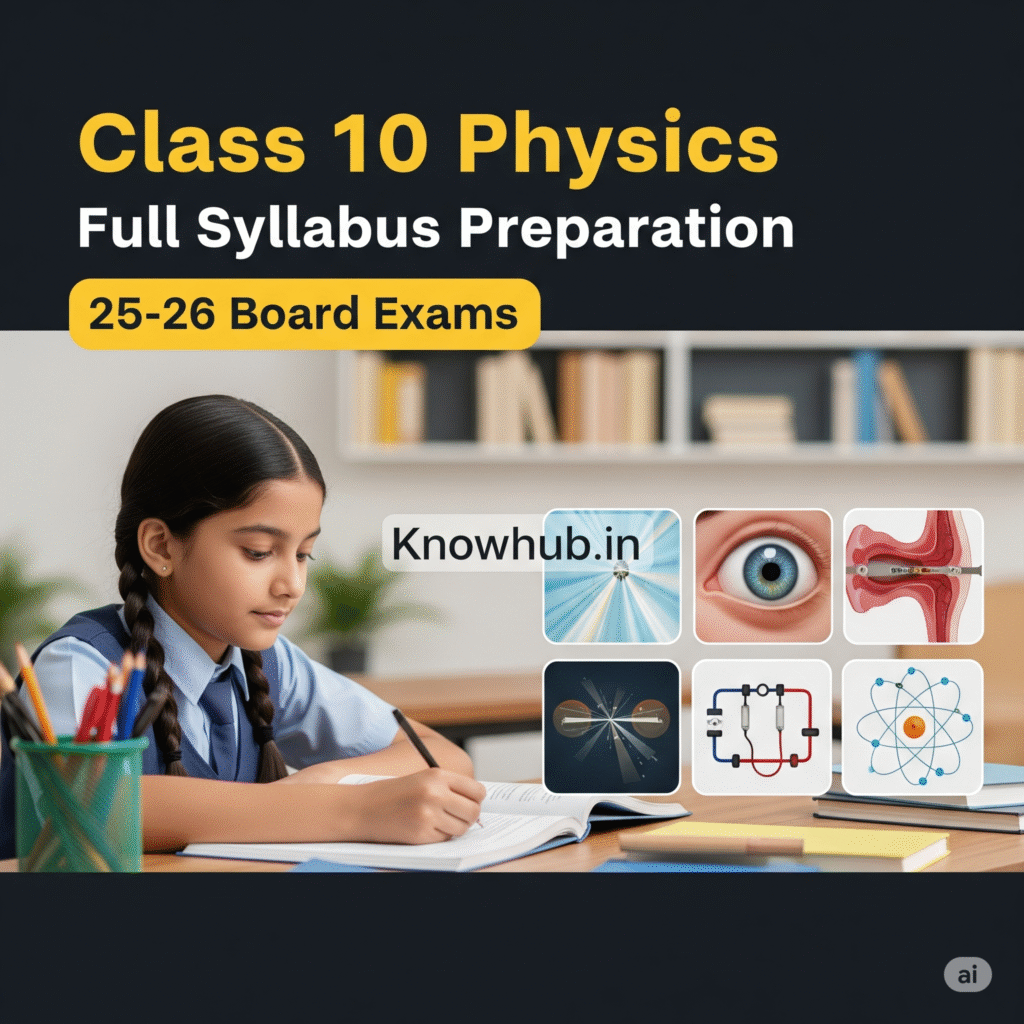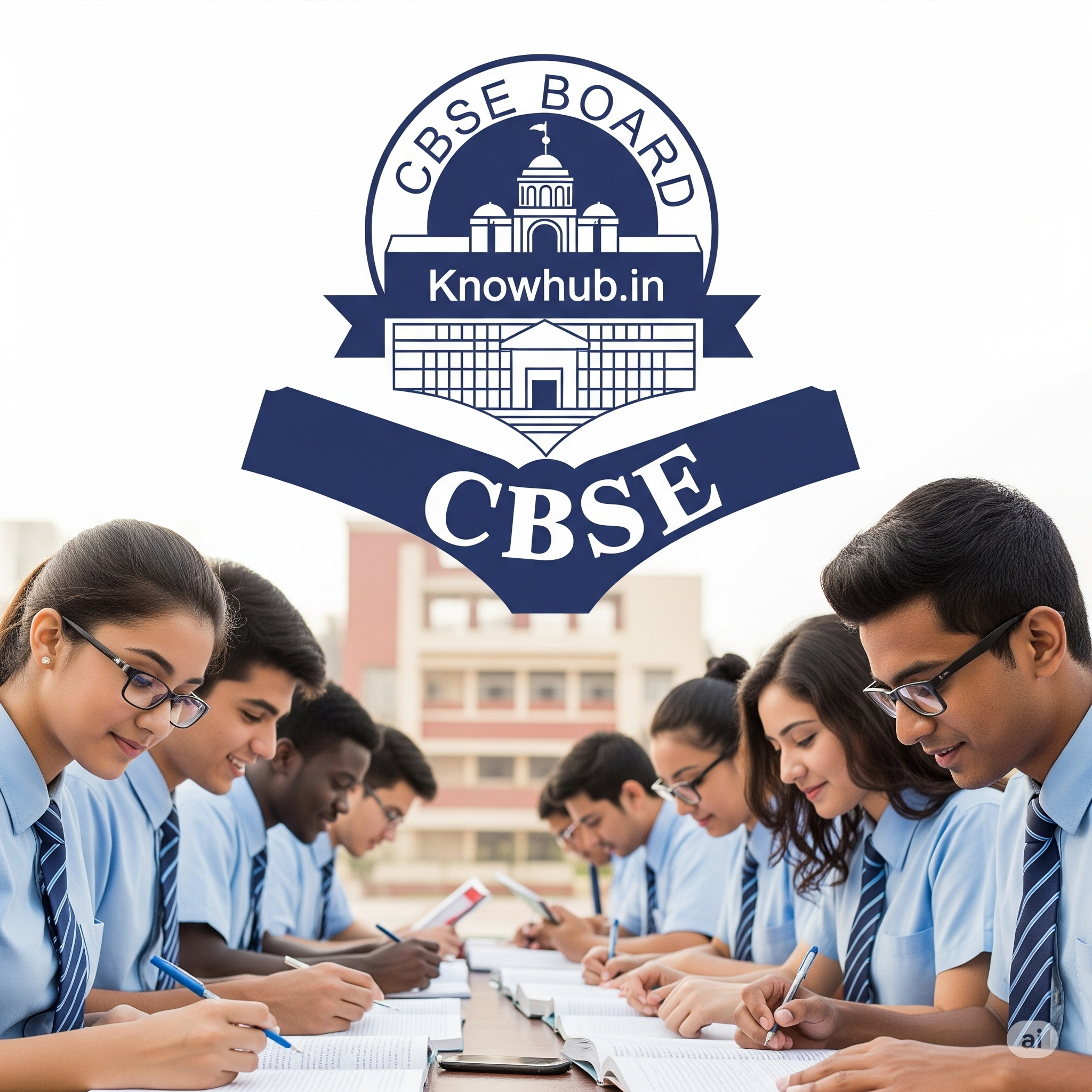CBSE Class 10 Physics Syllabus 2026
The Central Board of Secondary Education (CBSE) has introduced significant reforms for the academic session 2025-26, including changes to the Class 10 syllabus, assessment structure, and examination pattern.1 These updates emphasize competency-based learning, conceptual understanding, and real-world application, moving away from rote memorization.2 For students appearing in the 2026 Board Exams, understanding the revised Physics syllabus within the Science curriculum is crucial for effective preparation.
Key Changes and Examination Pattern for CBSE Class 10 Physics Syllabus 2026
One of the most notable changes is the introduction of biannual board exams for Class 10, allowing students two opportunities to improve their scores.3 The examination will now feature a blend of question types:
- 50% Competency-Based Questions: These questions will assess analytical skills, problem-solving abilities, and the application of concepts in real-life scenarios.4
- 30% Short and Long-Answer Questions: These will evaluate understanding of theories and detailed explanations.5
- 20% Multiple Choice Questions (MCQs): These will test foundational knowledge and quick recall.
The overall assessment structure for Science remains 80 marks for the theory paper and 20 marks for internal assessments, which include practicals, project work, and periodic tests.6 To pass, students must secure a minimum of 33% overall in each subject, combining both theory and internal assessments.7
Unpacking the Physics Component of Class 10 Science
The Class 10 Science syllabus is broadly divided into five units, with Physics concepts primarily falling under “Natural Phenomena” and “Effects of Current,” though elements of “Materials” also touch upon related topics.8
Here’s a detailed look at the key Physics topics students can expect for the 2026 Board Exams:
Unit III: Natural Phenomena (12 Marks Weightage)
This unit delves into the fascinating world of light and the human eye.
- Light – Reflection and Refraction:
- Reflection of light by curved surfaces (spherical mirrors).9
- Images formed by spherical mirrors, including concepts of center of curvature, principal axis, principal focus, and focal length.10
- Mirror formula (derivations not required) and magnification.11
- Laws of refraction and refractive index.
- Refraction of light by spherical lenses.12
- Image formation by spherical lenses, lens formula (derivations not required), and magnification.13
- Power of a lens and applications of spherical mirrors and lenses.
- The Human Eye and the Colourful World:
- Working of the human eye.
- Defects of vision and their correction (Myopia, Hypermetropia, Presbyopia).14
- Refraction of light through a prism.
- Dispersion of white light by a glass prism.15
- Atmospheric refraction (e.g., twinkling of stars).
- Scattering of light (excluding color of the sun at sunrise and sunset).16
- Applications of these phenomena in daily life.
Unit IV: Effects of Current (13 Marks Weightage)
This unit focuses on the principles of electricity and magnetism.
- Electric Current:
- Electric current, potential difference, and Ohm’s Law.17
- Resistance and resistivity.
- Factors affecting the resistance of a conductor.
- Series and parallel combination of resistors and their applications in daily life.18
- Heating effect of electric current and its applications (e.g., electric bulb, electric fuse).19
- Electric power, and the relationships between P, V, I, and R.
- Magnetic Effects of Electric Current:
- Magnetic field and magnetic field lines around a current-carrying conductor.20
- Magnetic field due to a current-carrying coil or solenoid.21
- Force on a current-carrying conductor in a magnetic field.22
- Fleming’s Left-Hand Rule.23
- Introduction to Direct Current (DC) and Alternating Current (AC).
- Frequency of AC and advantages of AC over DC.
- Domestic electric circuits (household wiring).24
- Electromagnetic Induction and Fleming’s Right-Hand Rule (basic concept).25
Practical Component
Physics practicals are an integral part of the curriculum and contribute to the internal assessment marks.26 Students will be expected to perform experiments related to:
- Studying the dependence of potential difference (V) across a resistor on the current (I) passing through it and determining its resistance, along with plotting a V-I graph.
- Determining the focal length of concave mirrors and convex lenses by obtaining the image of a distant object.27
- Tracing the path of a ray of light passing through a rectangular glass slab for different angles of incidence and interpreting the results.28
- Tracing the path of light rays through a glass prism.

How to Prepare for CBSE Class 10 Physics 2026
Given the shift towards competency-based learning and analytical questions, students should focus on:
- Conceptual Clarity: Understand the “why” and “how” behind each concept rather than just memorizing definitions.
- Application-Based Learning: Practice numerical problems and real-life examples related to the topics.
- Problem-Solving Skills: Develop strong analytical and critical thinking abilities to tackle diverse question types.
- Practical Application: Pay close attention to practical experiments and their underlying principles.
- Refer to Official Syllabus: Always refer to the official CBSE Class 10 Science syllabus for 2025-26, available on cbseacademic.nic.in, for the most accurate and updated information.
By adopting a holistic and application-oriented approach, students can effectively prepare for the CBSE Class 10 Physics examination in 2026 and excel in their academic journey.
This content is prepared and edited by #Knowhub for any other information or any query Knowhub can be contacted using the Contact page.

